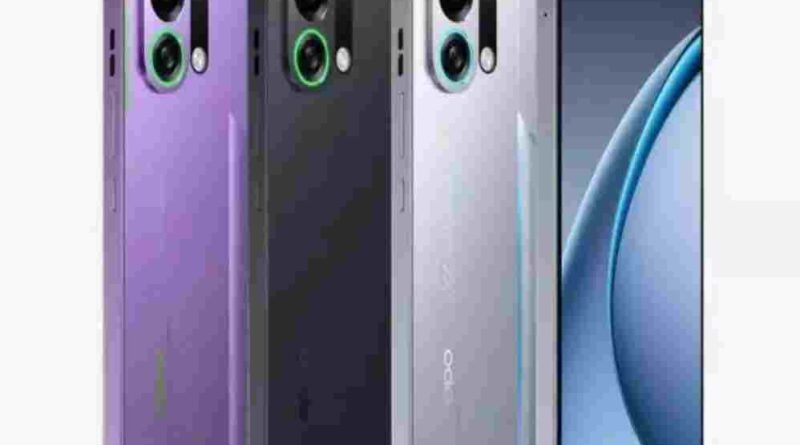Oppo K13 Turbo Pro 5G vs Poco F7 5G: Snapdragon 8s Gen 4 Face-Off in India
The Indian smartphone market is gearing up for a major head-to-head battle this August, as two highly anticipated mid-premium devices—the Oppo K13 Turbo Pro 5G and Poco F7 5G—prepare to lock horns. Both handsets are powered by Qualcomm’s latest Snapdragon 8s Gen 4 chipset, promising flagship-level performance without the top-tier price tag.
With Oppo’s K13 Turbo Pro 5G set to officially debut on August 11, 2025, the buzz around which phone delivers the better deal is louder than ever. Here’s a closer look at how the two stack up across design, performance, cameras, and price.
Design & Build
Oppo is clearly aiming for a bold visual statement with the K13 Turbo Pro 5G. It introduces a “Neon Turbo” design, combining a metallic finish with integrated RGB lighting that glows at the back—something that will appeal to gamers and users who want their phone to stand out.
Poco, on the other hand, keeps things more understated yet premium. The Poco F7 5G comes with a dual-tone matte finish and adds IP-rated dust and water resistance, making it a slightly safer choice for those who value durability over flashy aesthetics.
Display Quality
On paper, there’s little to separate the two. The Oppo K13 Turbo Pro is expected to feature a 6.78-inch AMOLED panel with a 1.5K resolution and a 120Hz refresh rate, ensuring smooth visuals and crisp clarity.
The Poco F7 5G matches that with its own 6.83-inch AMOLED display, also offering a 120Hz refresh rate and high resolution. Both support HDR content and aim to deliver vibrant colors with deep blacks, but Oppo’s marketing hints at slightly better peak brightness for outdoor visibility.
Camera Systems
Both smartphones stick to a 50MP primary camera as the star of the show, but their supporting lenses differ.
- Oppo K13 Turbo Pro 5G: A 50MP main camera paired with a 2MP depth sensor for portrait shots, plus a 16MP selfie camera up front.
- Poco F7 5G: A 50MP main camera with an 8MP ultra-wide lens, offering more versatility for landscape and group shots, plus a 20MP front camera for sharper selfies.
In short, Oppo is focusing more on style and straightforward photography, while Poco is leaning toward functional versatility.
Performance & Storage
Under the hood, both phones are driven by the Snapdragon 8s Gen 4—a chipset that brings high-end gaming and multitasking capabilities without the heat or battery drain of more power-hungry flagship processors.
- Oppo offers configurations up to 16GB RAM with 512GB UFS 4.1 storage, making it attractive for heavy multitaskers and gamers.
- Poco caps at 12GB RAM but also offers up to 512GB UFS 4.1 storage, which should still be more than enough for most users.
Battery & Charging
While exact capacities vary slightly, both devices are expected to pack batteries in the 5,000mAh range with fast charging—likely 100W or above for Oppo and around 90W for Poco. This means full-day usage with rapid top-ups in under 30 minutes for both.
Software Experience
Both phones run Android 15 out of the box, with Oppo using ColorOS and Poco sticking to HyperOS. Oppo is promising three major Android updates, while Poco is expected to match that commitment. The real difference will come down to user interface preferences—ColorOS leans towards feature-packed customization, while HyperOS offers a cleaner, performance-focused feel.
Pricing & Value
This is where the decision gets tricky. Oppo is expected to price the K13 Turbo Pro under ₹40,000 in India, while Poco has already undercut that with a starting price of ₹31,999 for its 12GB + 256GB variant.
Oppo may justify the higher tag with its larger RAM option, distinctive design, and potentially faster charging speeds, but Poco offers serious value for money given its specs and lower cost.
Verdict: Which One Should You Choose?
- Pick the Oppo K13 Turbo Pro 5G if you want a phone that turns heads, offers more RAM, and features lightning-fast charging alongside a visually bold design.
- Pick the Poco F7 5G if you want top-tier performance at the best possible price, with added durability and a more versatile camera setup.
Both phones are likely to satisfy gamers, content consumers, and power users—but your choice ultimately comes down to whether you value style and top RAM or price and practicality more.
Disclaimer
The information and content shared on digitalgithub.com — including articles, blogs, news, guides, and other resources — is intended for general informational and educational purposes only. We do not guarantee the completeness, reliability, or suitability of any information. Always seek the guidance of a qualified professional before making decisions based on the information you read. Use this site at your own risk.

